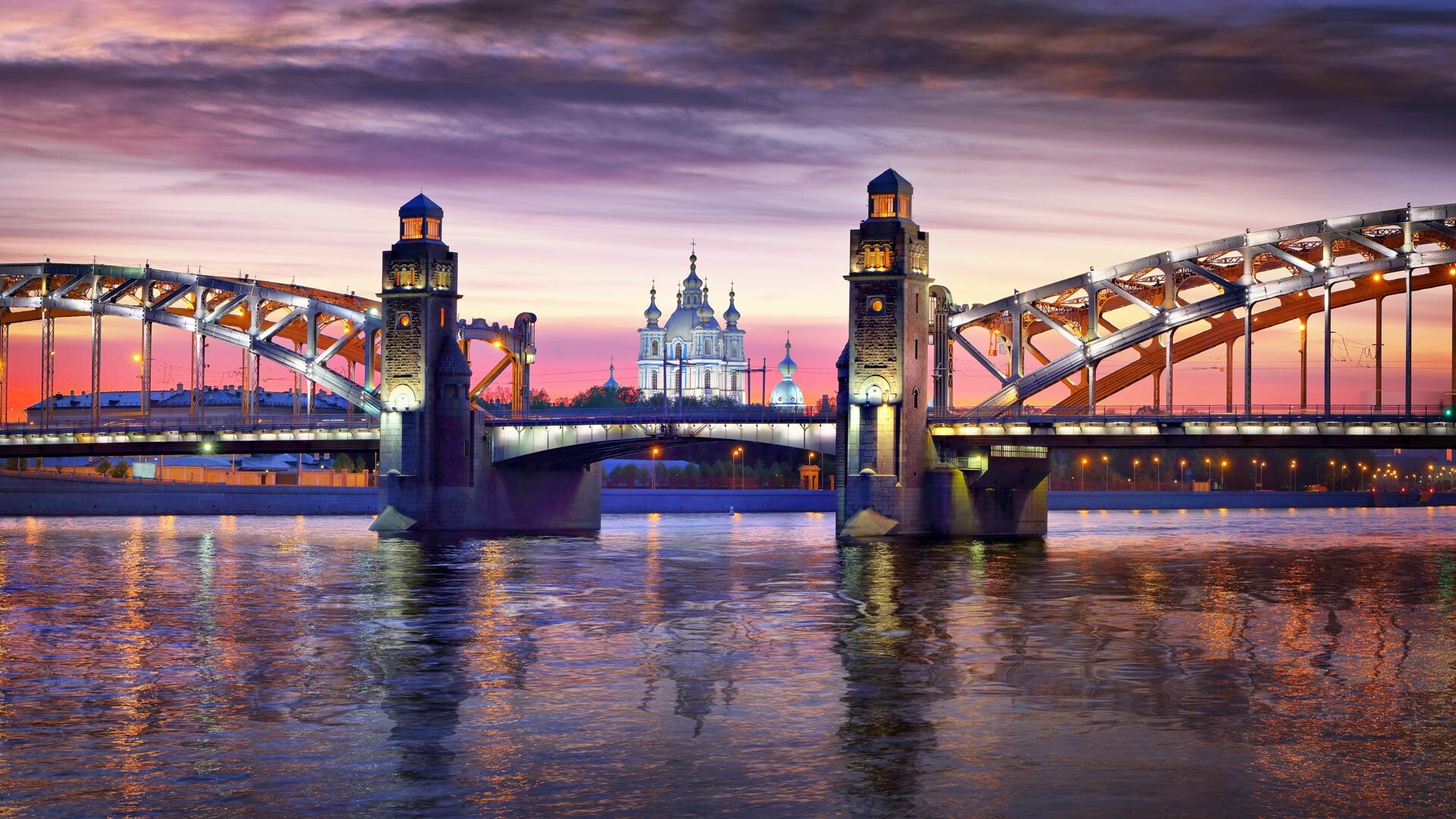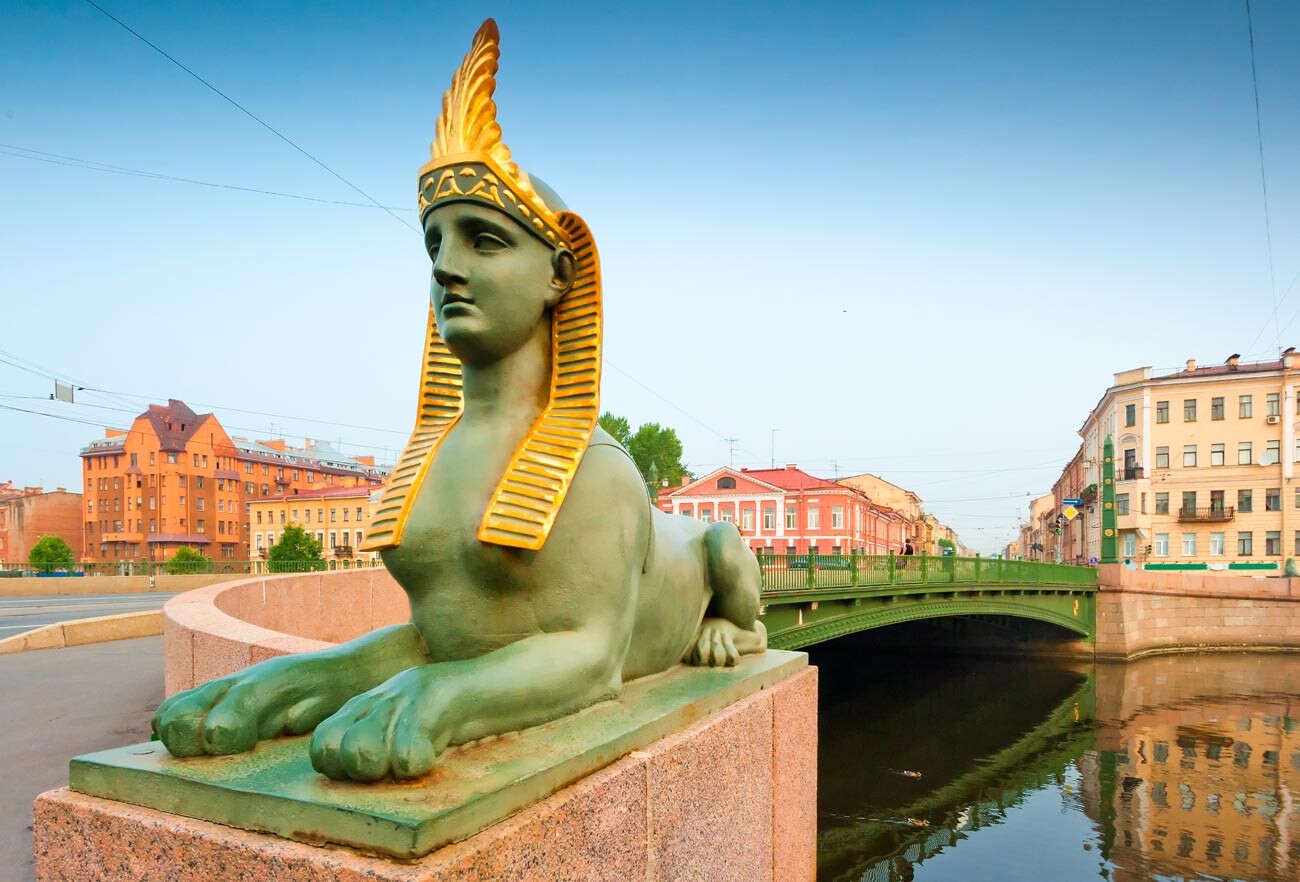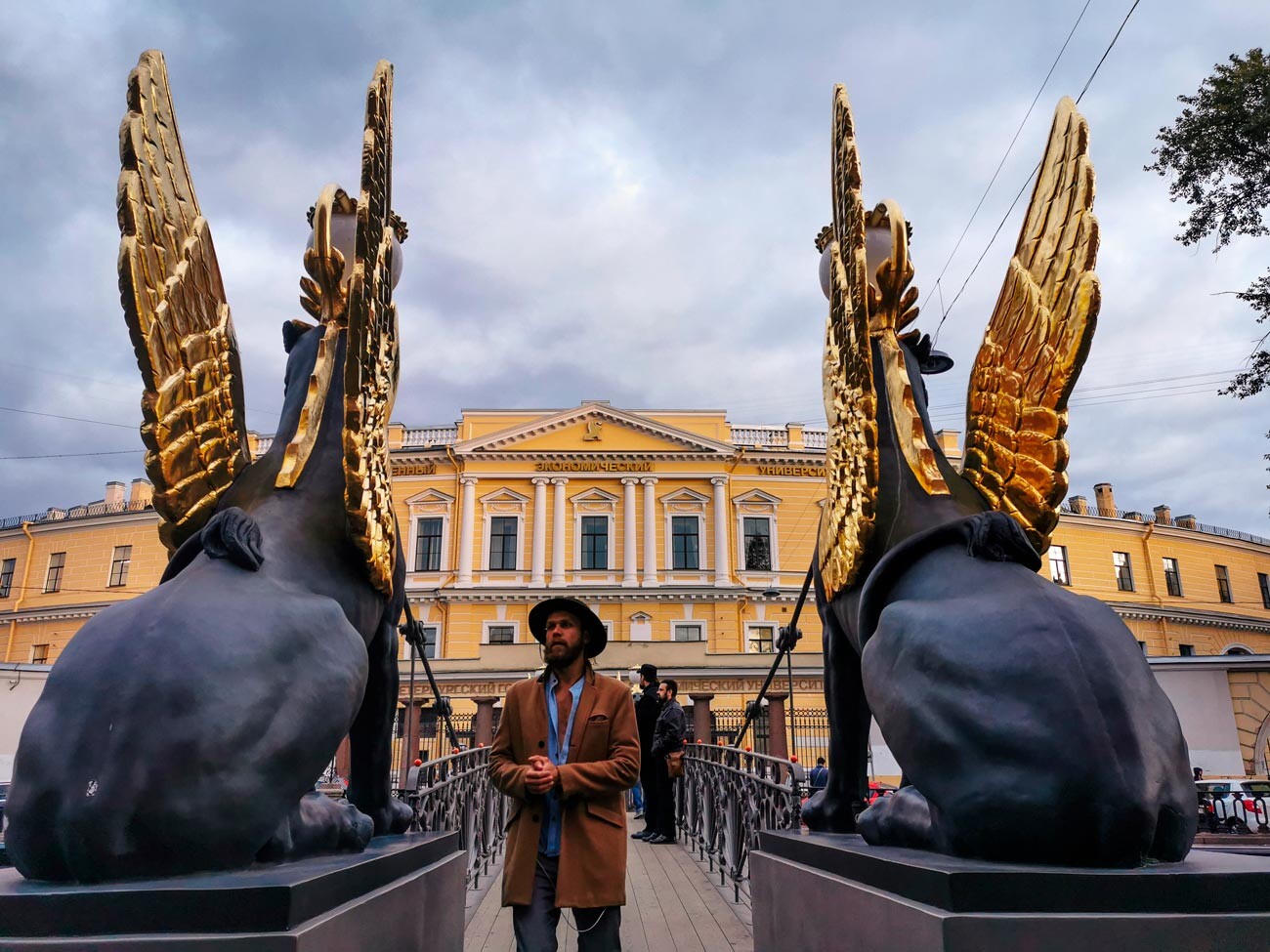
The Bolsheokhtinsky Bridge.
Getty Images
One of the most famous bridges connects the city center (near the Winter Palace) and Vasilevsky Island (where the Kunstkamera is located). You can often see this view on postcards - especially at night in the summer, when the bridge is open and crowds of people gather there to observe the passing ships. The modern Palace Bridge was built in 1916 and became the first permanent bridge across the Neva River. It consists of five spans and is accessible to cars and pedestrians.

A stark beauty in the depths of the center. The Egyptian Bridge connects parts of Lermontovsky Avenue across the small Fontanka River. It’s named after Ancient Egypt - that’s how the 19th century scientists’ interest in the mysteries of this civilization was reflected in the architecture. On one of the Neva embankments, one can find actual sphinxes, brought from Ancient Egypt, but iron sphinxes, which guard the Egyptian bridge, were cast at a local factory in 1826. The columns and other architectural details were also decorated in the Egyptian style and ornamented “like the old times”.

The Anichkov Bridge over the Fontanka River is located right on Nevsky Prospect, surrounded by the former imperial palaces. You can recognize it from afar by its huge sculptures, which are called “Taming Horses”. If you look closely, you can see patterns with mermaids and seahorses on the railing.
The sculptures, which look in the direction of Vosstaniya Square (to the Moscow railway station), have no horseshoes, while those that look towards the Admiralty - do. Historians explain this architectural idea in different ways. According to one version, the “shodded” horses are those that have already been tamed. And, according to another, many blacksmith shops were previously located on Liteyny Prospekt (literally the next street after Anichkov Bridge); it symbolizes that the wild horses “go” to the smith, while those returning are shodded and tame.

Downstream of the Fontanka River is another magnificent bridge, named in honor of Russian scientist Mikhail Lomonosov - however, it got this name only in 1948. Before that, the bridge was named after Catherine the Great and then in honor of Count Chernyshev. In the 19th century, it was a drawbridge, but after reconstruction in 1913, the bridge no longer had the ability to be drawn. It’s decorated by monumental granite towers, connected with chains - the draw mechanisms were hidden inside them.

This is one of the main automobile bridges of St. Petersburg, which connects Vasilevsky and Petrogradsky islands. It offers the most beautiful views of the Palace Embankment, the Peter and Paul Fortress and the Hermitage. The Exchange Bridge is decorated with a trident of Neptune. And it’s also lit up amazingly at night.

This is one of the most unusual bridges in St. Petersburg! It’s a drawbridge, built in 1903, which connects Petrogradsky and Admiralteysky islands. But the draw mechanism is “single-wing”, that is, only one span is raised. Another striking feature of the Trinity Bridge are its lanterns, which look like giant candelabra, as well as granite obelisks with two-headed eagles.

This bridge across the Neva River connects the north of the city’s historic center with the Malaya Okhta district. Before 1917, it was called the Peter the Great Bridge. It’s easily recognized by the granite towers in the form of Roman-style lighthouses, which are illuminated at night. The original mechanism allows you to raise the central span in just 30 seconds.

Three bridges in one place. ‘Tripartite Bridge’ is the nickname given by locals, and now by guides, to a composition of three small bridges located near the intersection of the Moika River and the Griboyedov Canal, not far from the Cathedral of the Savior on Spilled Blood. Officially, these bridges are called Theater Bridge, Malo-Konyushenny Bridge and Lipkin Bridge. All of them are made in the style of classicism and decorated with interesting details - a Medusa’s head, palm leaves and gilding.

St. Petersburg is the city of lions! They decorate palaces, streets and embankments. And, of course, the lions have their own bridge - it’s located near the Mariinsky Theater on the Griboyedov Canal. It is guarded by four huge cast-iron lions, inside which are hidden bridge supports. And, of course, the locals have a legend that you have to make a wish by touching the paws of two neighboring lions at the same time. You can find a smaller copy of this bridge in the Tiergarten park in Berlin.

This popular bridge of city residents and tourists alike is located near the Griboyedov Canal. It was opened in 1826 and still strikes the imagination. Its mythical griffins - or winged lions - also disguise the bridge supports. According to ancient Greek legends, it was the griffins that guarded the gold in the land of the Hyperboreans. They were also called the ‘dogs of Zeus’. They also guarded the money reserves of the Russian Empire.
Dear readers,
Our website and social media accounts are under threat of being restricted or banned, due to the current circumstances. So, to keep up with our latest content, simply do the following:
If using any of Russia Beyond's content, partly or in full, always provide an active hyperlink to the original material.
Subscribe
to our newsletter!
Get the week's best stories straight to your inbox